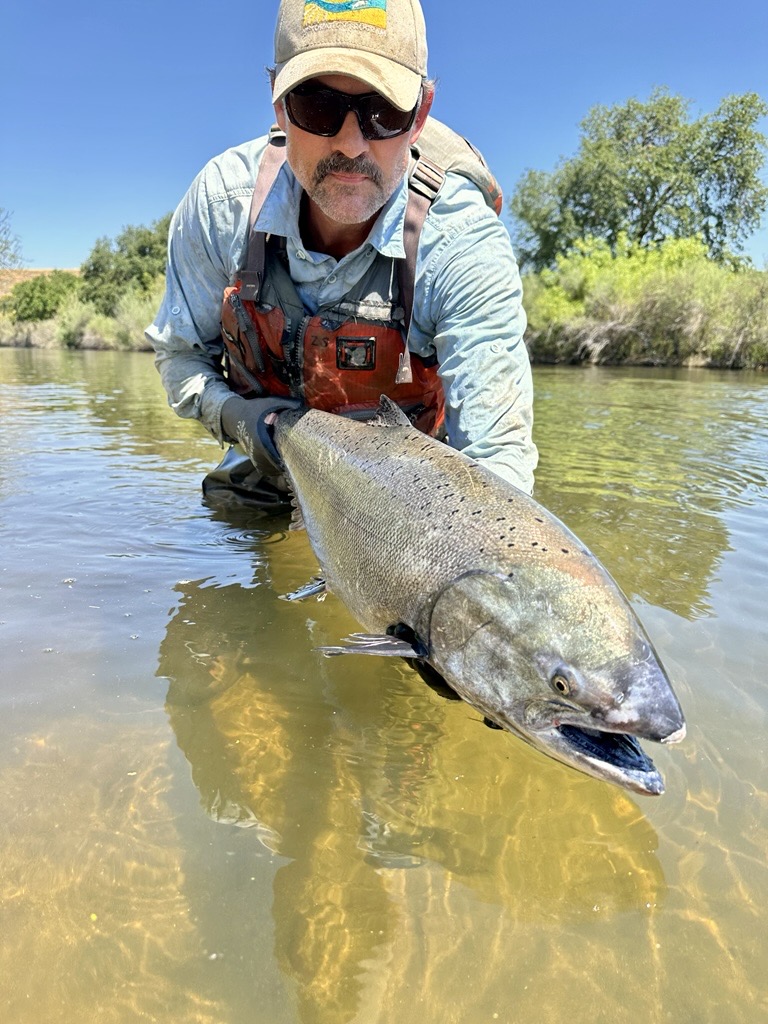
Record-Breaker! Salmon return in droves for 2025
The San Joaquin River Restoration Program set a new record this year for returning adult spring-run Chinook salmon: 448 – the highest number of captured returns recorded since the Program started reintroducing spring-run juveniles in 2014.
“The high return numbers clearly demonstrate that spring-run Chinook can survive and return to spawn in the San Joaquin River” said program manager, Dr. Donald Portz. “We look forward to a future where salmon will be able to swim unencumbered all the way to spawning grounds below Friant Dam,” he said.
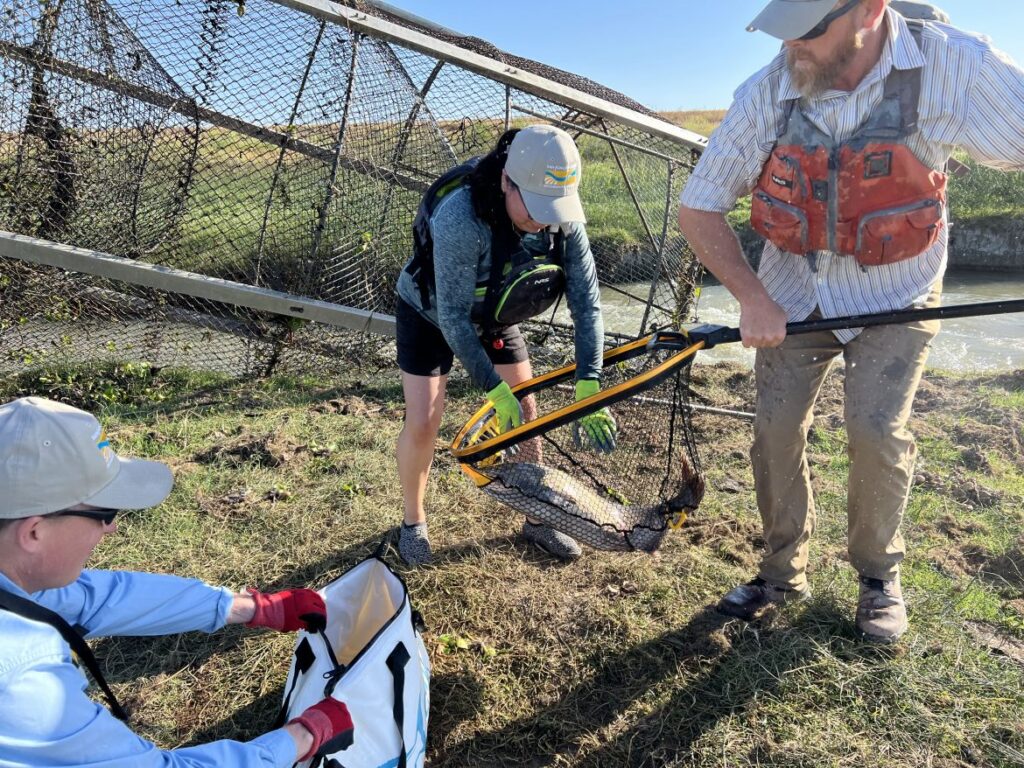
The previous record for captured natural returns was 93 set in 2021.
Due to multiple in-stream structures which halt their migration upstream, the San Joaquin’s returning spring-run Chinook must be captured in fyke traps – large-diameter, mesh cylinders placed in the river – before they are trucked in a tank approximately 120 miles to Reach 1 of the Restoration Area near Friant Dam and released.
“Our fish need the cooler water and habitat of Reach 1 in order to hold over the summer before they spawn in the fall,” said the Program’s lead fish biologist, Dr. Oliver “Towns” Burgess.

While most of this year’s adults were caught in fyke traps located in the Eastside Bypass downstream of the State of California’s Eastside Bypass Control Structure, spring-run Chinook were also trapped and hauled from Sack Dam, about 45 miles upstream of the control structure. Earlier in March and April, higher river flows allowed salmon to get past the Eastside Bypass Control Structure and at least one got up to Sack Dam – the next in-stream impediment after the control structure.
“We expect to begin construction on the Arroyo Canal Fish Screen and Sack Dam Fish Passage Project at the end of the summer this year,” said Program Manager Portz. The project will allow fish to pass around Sack Dam and avoid diversion into Arroyo Canal.
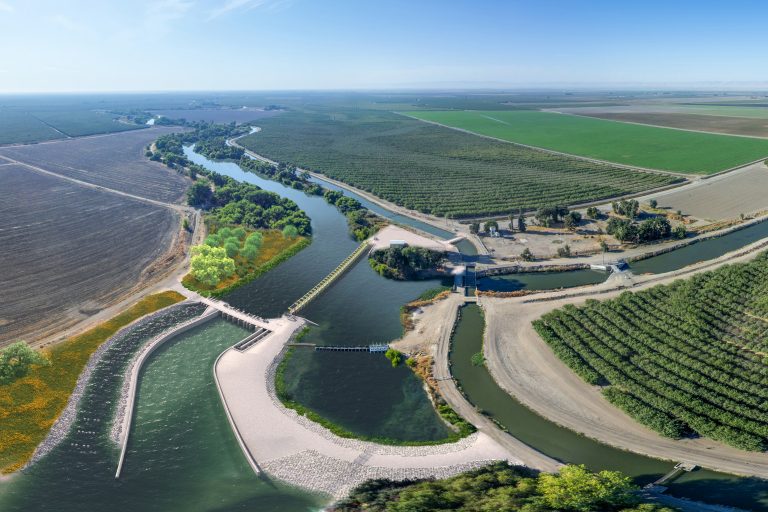
“Installing a fish screen for Arroyo Canal will benefit both fish and farmers by protecting salmon from straying into canals while allowing water users to continue their lawful water use,” said Portz. Portz said he also expects passage at the control structure to be completed by the same time passage at Sack Dam is completed in summer 2028. Currently, unless high river flows are present, returning adult salmon are unable to make their way past the control structure.
Spring-run Chinook salmon are anadromous, meaning, they begin their lifecycle in fresh water before migrating out to the ocean. There, juvenile salmon mature for several years in salt water before returning as adults to their natal rivers and streams to complete their lifecycle by spawning before they die.
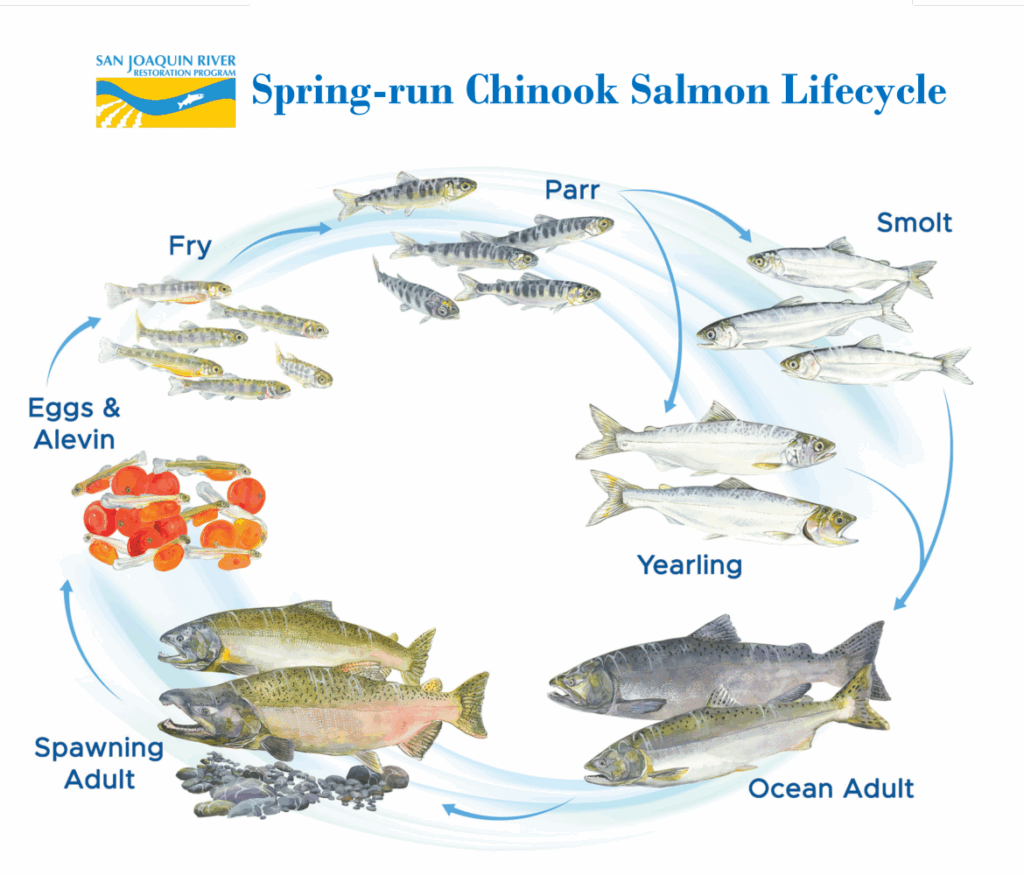
But what does it take to get a high number of returning adults and grow a population of salmon? It is believed that the success of outmigrating juveniles is a key factor related to a higher number of returning adults. Salmon have evolved to account for boom/bust water years by adapting strategies to maximize survival in wetter years to compensate for poorer survival in drier years. For example, a certain percentage of juveniles — known as yearlings (see lifecycle illustration above) — stay in their natal fresh water for an additional year before emigrating to the ocean. This adaptation helps to support the generation if factors such as disease or drought take their toll. In other instances, a wetter year may encourage juveniles to move out of the system to the ocean more rapidly. Burgess illustrated the point that high water years in 2017 and 2023 likely resulted in higher juvenile outmigration survival which led to larger adult returns two years later.
“We’re likely seeing a high-number of returning adults this year because of their successful exit as juveniles,” he said.
In addition, the San Joaquin’s spring-run Chinook population is likely developing local adaptation to the San Joaquin Basin. This, in turn, can add diversity to the larger population of Central Valley spring-run Chinook salmon and increase their resiliency throughout the Central Valley — a concept known as the Portfolio Effect.
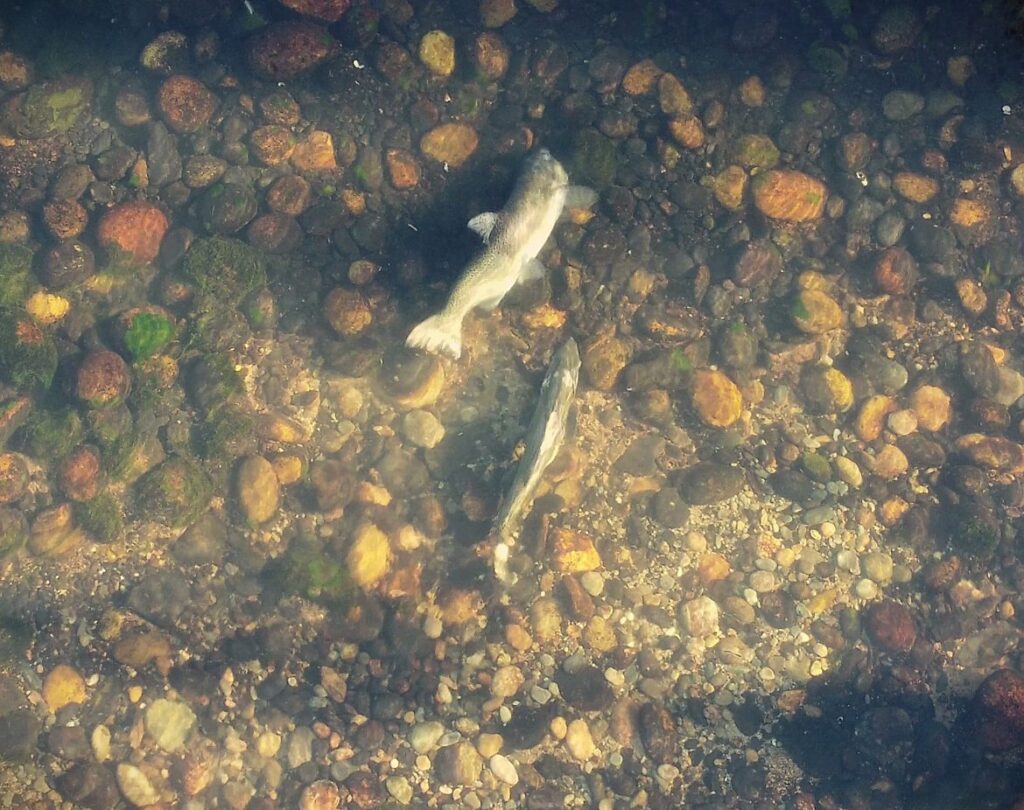
This isn’t the first time the Program has seen a high number of returning adults. 2017 was a high-water year on the San Joaquin River and in 2019, biologists estimated on the order of 400 returning adults to the San Joaquin. An exact number is unknown since field crews had to curtail monitoring due to flood conditions. However, over 200 redds (fish nests) were counted in the river and it takes two to tango.
“Given the record-high number of returns this year, we’re hopeful that we surpass the 2019 record for redds this fall,” added Burgess.
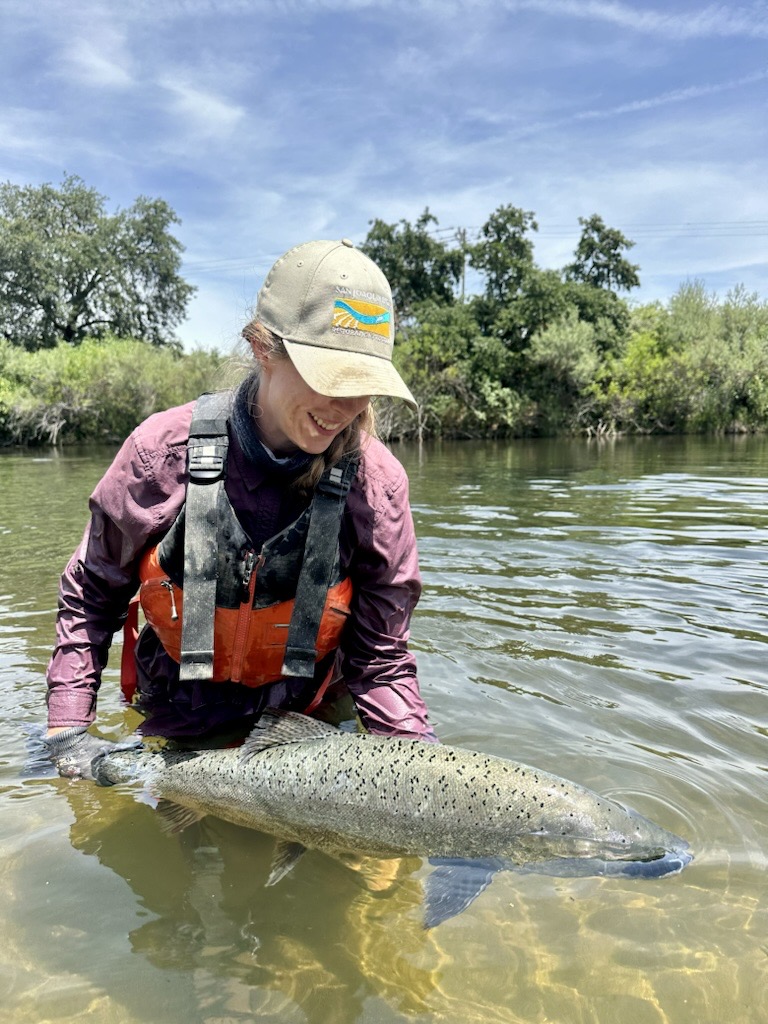
Return spring-run monitoring for this year concluded on June 5. As is their lifecycle, the salmon currently in the river will hold in Reach 1 until September when spawning will commence, with the emerging generation expected in November before outmigrating to the ocean in spring 2026. Stay tuned for Program updates about the upcoming spawning season!
Watch a video of our trap and haul operations for spring-run Chinook returns below!
